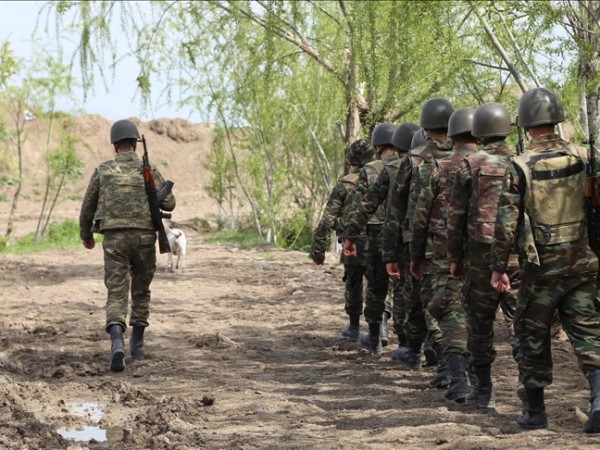TBC Capital published weekly update from the Chief Economist. The report estimiates potential economic impact on Georgia of military conflict between Russia and Ukraine. First of all, TBC Capital should admit that in this environment with lots of uncertainties, it is difficult to specify certain geopolitical, military, and economic scenarios. Nevertheless, based on analysis of past crisis episodes and expert judgment, the stress scenario could be an escalation of conflict, however, a relatively short-lived and with sanctions imposed on Russia, though without cut-off from SWIFT system. In terms of economic impact, in 2022, TBC Capital assumes around 10% and 1-2% real GDP contraction for Ukraine and Russia, together with 40% and 15% depreciation of UAH and RUB, respectively. Unlike 2014-2015 shock, we assume oil and other commodity prices to remain strong, being important for both economies.
"In this scenario, we assume in 2022, compared to 2021, Georgia's destination demand sensitive exports, remittances, and tourism inflows to decline in USD terms by 30% from Ukraine and by 10% from Russia. At the same time, while exports and, especially, remittances are already back on track, tourism is still recovering from its pandemic lows and, therefore, for the tourism shock this recovery is taken into account", - the document reads.
According to the report, total estimated net loss arising from Ukraine and Russia only, compared to 2022 baseline, stands at around 211 USD million or 1.1% of 2021 nominal GDP. Considering the multiplier of around 1.5, the impact would equal to around 1.7% of 2021 nominal GDP. This would result in lower real impact, especially when assuming slightly lower GDP deflator in the stress scenario. At the same time, the impact could be somewhat higher due to indirect negative impact arising from spill-over effects from other regional economies, which could increase the estimated net loss of 211 USD million to 240 USD million.
"As for the GEL, we assess current pricing as only somewhat optimistic and in case of stress the GEL could weaken up to around 10%. While we do not see 240 USD million net decline in inflows as a game-changer for 2022 baseline BoP projection, the depreciation of RUB and UAH may require some correction of the GEL, likely primarily due to adverse sentiments. As for the TRY, it appears that at the moment weaker lira is not a major issue, taking into account the increase of the price level in Turkey and our previous analysis. Regarding the response package, in case of stress scenario, we do not rule out additional fiscal stimulus financed externally and/or the NBG interventions", - the report reads.
According to the document, recently, Ukrainian, Russian, and Belarusian yields have increased substantially. Also, the risk premium is somewhat higher for Georgia and Armenia. On the other hand, Turkish yields are normalizing, probably on the back of strengthened confidence that there will relatively stronger monetary discipline and the USD/TRY unconventional hedging scheme appears to succeed.
"First of all, we should admit that in this environment with lots of uncertainties, it is difficult to specify certain geopolitical, military, and economic scenarios.
• Nevertheless, based on analysis of past crisis episodes and expert judgment, the stress scenario could be an escalation of conflict, however,
a relatively short-lived and with sanctions imposed on Russia, though without cut-off from SWIFT system
• In terms of economic impact, in 2022 we assume around 10% and 1-2% real GDP contraction for Ukraine and Russia, together with 40% and 15% depreciation of
UAH and RUB, respectively
• Unlike 2014-2015 shock, we assume oil and other commodity prices to remain strong, being important for both economies
• In this scenario, we assume in 2022, compared to 2021, Georgia's destination demand sensitive exports, remittances, and tourism inflows to decline in USD terms by 30% from Ukraine and by 10% from Russia. At the same time, while exports and especially remittances are already back on track, tourism is still recovering from its pandemic lows and, therefore, for the tourism shock this recovery is taken into account", - the documnet reads.
According to the report, TBC Capital splits exports into destination demand sensitive and commodity categories, prices for the latter predominantly being set on the international markets. Therefore, finding substitute markets being relatively easy. Second, for the remaining sensitive product TBC Capital assumes on average 55% import share. For example, in traditional export product like wine the import share is around 50%.
As a result, total drop in domestic valued added exports is estimated at around 47.4 USD million when compared to 2021 and 96.9 USD million when compared to 2022 TBC Capital baseline scenario.
In case of remittances, estimated remittance inflows are 68.9 USD million lower compared to 2021 and 124.4 lower compared to 2022 baseline. Adjusted for around 50% share of imports in remittances expenditure the negative impact equals to around 34.5 USD million compared to 2021 and 62.2 USD million compared to 2022 baseline.
• The stress would have a negative impact on tourism inflows as well, however, the recovery of the sector from its pandemic-related lows should be taken into account;
This is especially relevant for Russia as compared to Ukraine, as the latter largely already rebounded to its pre-pandemic levels
• Therefore, in baseline scenario for Ukraine much lower growth is assumed;
• As a result, estimated 2022 tourism inflows from Russia and Ukraine are higher by 138.1 USD million compared to 2021 and lower by 94.1 USD million compared to 2022 baseline, which after adjustment for around 45% of imports share would equal to 75.9 USD million increase compared to 2021 and 51.8 USD million drop compared to 2022 baseline.
Total estimated loss of net inflows of up to 10 USD million compared to 2021 and 240 USD million compared to 2022 baseline scenario, when compared to 2022 baseline BoP outlook, looks material though quite manageable shock. Furthermore, instead of increase in central bank’s reserves, we do not rule out selling of around 300 USD million as well as somewhat slower pace of fiscal consolidation on the back of relatively higher government external borrowings.
• Because of low share of Ukraine and Russia in FDI inflows to Georgia, the impact is not considered
• Total estimated net loss arising from Ukraine and Russia only, compared to 2022 baseline, stands at around 211 USD million or 1.1% of 2021 nominal GDP
• The decline in net inflows compared to 2021 is only up to 10 USD million taking into account still unprecedented year-on-year recovery pace of tourism inflows
• Considering the multiplier of around 1.5, the impact would equal to around 1.7% of 2021 nominal GDP
• This would result in lower real impact especially when assuming slightly lower GDP deflator in the stress scenario
• At the same time, the impact could be somewhat higher due to indirect negative impact arising from spill-over effects from other regional economies,
which could increase the estimated net loss of 211 USD million to 240 USD million
• Therefore, overall if the growth in the baseline scenario is around 5.5%, we assume in the stress scenario growth to stand at around 4.0%
• As for the GEL, we assess current pricing as only somewhat optimistic and in case of stress with around 15% and 40% of RUB and UAH, respectively, the GEL could weaken up to around 10%
• We do not see 240 USD million net decline in inflows as a game-changer for 2022 baseline BoP projection
• However, depreciation of RUB and UAH may require some correction of the GEL, likely primarily due to adverse sentiments
• As for the TRY, it appears that at the moment weaker lira is not a major issue
• Also, in case of stress scenario, we do not rule out additional fiscal stimulus financed externally and/or the NBG interventions.















